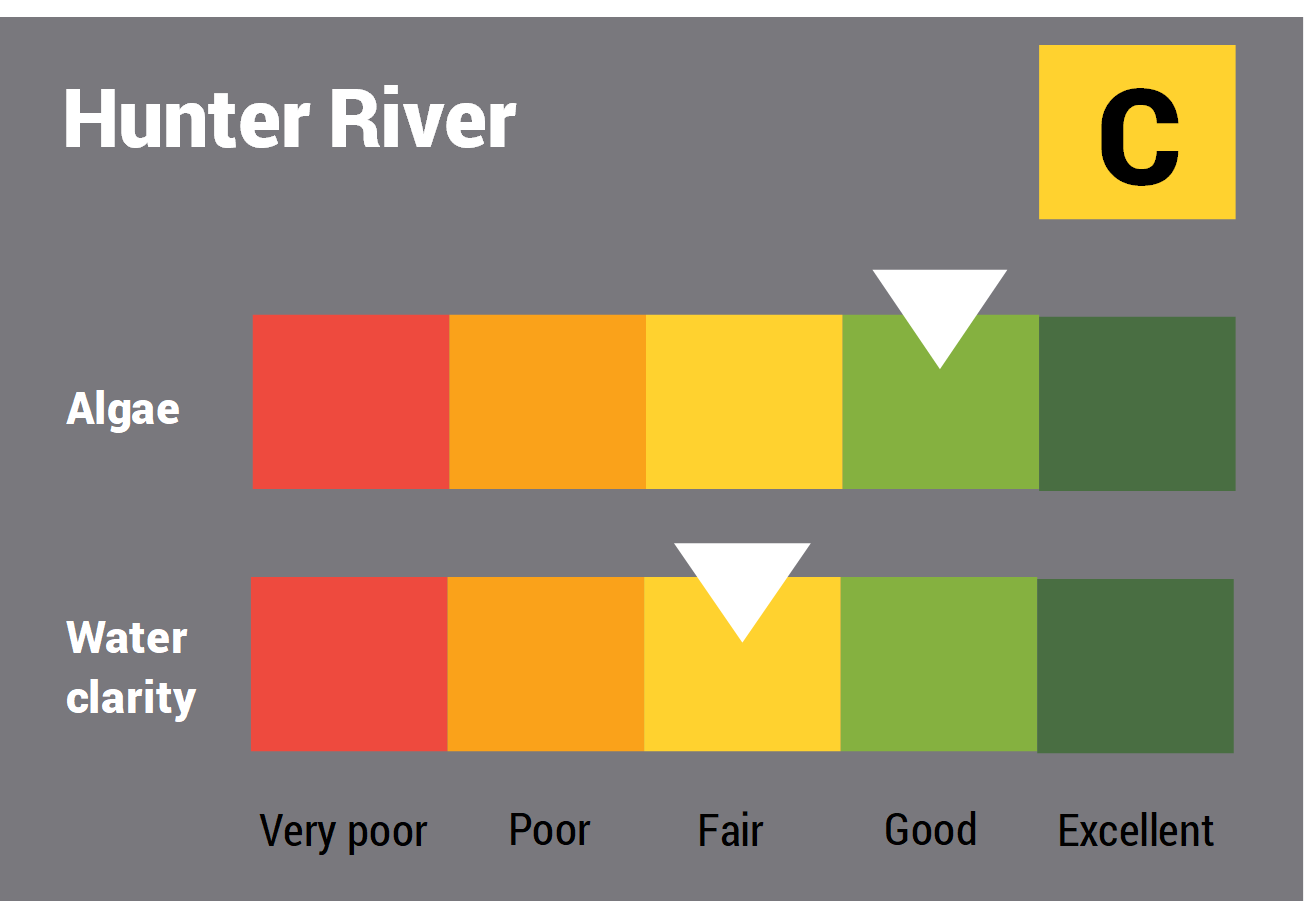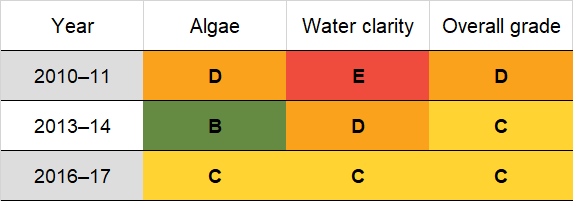Physical characteristics
Estuary type: Barrier river
Entrance
location |
Latitude (ºS) |
–32.91 |
| Longitude (ºE) |
151.8 |
| Catchment area (km2) |
21,367 |
| Estuary area (km2) |
47 |
| Estuary volume (ML) |
137,089.4 |
| Average depth (m) |
3.3 |
Tidal exchange volume
Tidal exchange volume or tidal prism data is available for this estuary. This tidal prism was measured in 1998.
| Tide state |
Flow
(106 m3) |
Local tidal
range (m) |
Sydney Harbour
tidal range (m) |
| Ebb flow |
29.2 |
1.42 |
1.36 |
| Flood flow |
26.8 |
1.41 |
1.37 |
Notes: km2 = square kilometres; m = metres; m3 = cubic metres; ML = megalitres.
Water depth and survey data
Bathymetric and coastal topography data for this estuary are available in our data portal.
Land use
The Hunter River catchment has been heavily disturbed with most of the middle and lower catchment having been cleared. Less than 40% of the catchment remains forested, a lot of which is protected in the western sections of the catchment. The dominant land use within the catchment is beef and dairy production. Mining, industry and urban areas make up the remainder of land use.
Water use
Find out about water use in the Hunter catchment, including information about major water users, real-time flow data, and environmental and water sharing plans.





